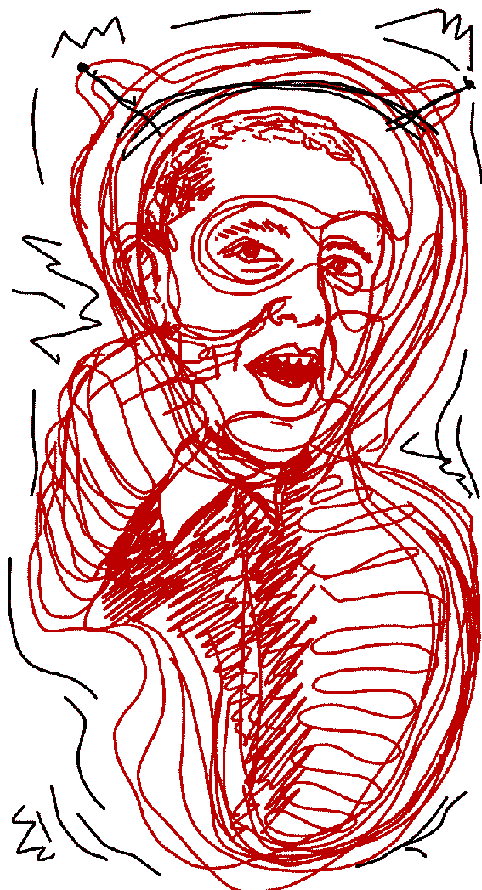Story highlights
Politicians and the media have affinity for branding bipartisan groups as gangs
The fact that they are called gangs might suggest a problem, says independent analyst
Gang-style politics hasn't helped stuck legislation for the most part
There’s another bipartisan gang roaming the halls of the Capitol – the “Gang of Eight” that’s proposing reform legislation for the country’s immigration system.
When the four Democrats and four Republicans announced that they planned to propose a deal on immigration reform, they joined gangs that have gone before them – usually a bipartisan group of senators or representatives who think they can bring agreement to a legislative standoff.
President Barack Obama praised this latest group’s efforts on Tuesday before pointing out that the gangs’ records aren’t very good.
“Yesterday, a bipartisan group of senators announced their principles for comprehensive immigration reform, which are very much in line with the principles I’ve proposed and campaigned on for the last few years,” Obama said at a speech in Las Vegas. “So at this moment, it looks like there’s a genuine desire to get this done soon, and that’s very encouraging.”
Immigration plan: A new era of bipartisanship or a political necessity?
The fact that these groups are called “gangs” is a sign of bigger problems, says John Avlon, a CNN contributor.
“The fact that bipartisan Senate groups are invariably called ‘The Gang of…’ – comparing them to anti-Maoist conspirators – says volumes about the hyperpartisan culture of conformity in Washington,” Avlon wrote.
Politicos and media on Capitol Hill have taken to the term – from fixing the national debt to the most sensitive security issues, it’s all gang-related.
Most of them have been fleetingly significant, at best.
The most important gang on Capitol Hill is the “Gang of Eight” – a bipartisan group of leaders from the House and Senate, along with the chairs and ranking members of the Senate and House intelligence committees.
Though the president is required by keep Congress up-to-date on covert intelligence operations, the “Gang of Eight” serves as a way for the president to limit the information to the most essential people in the government, like he did in the 2011 mission that killed Osama bin Laden.
One of the first informal gangs on Capitol Hill was the “Gang of Seven” – a group of seven conservative freshman Republicans in the House in the early 1990s who went after corruption. The group made its mark with the House banking scandal, in which members were allowed to overdraw on their House checking accounts without penalty.
Speaker of the House John Boehner, then a no-name freshman, was a member of the gang, along with future presidential hopeful Sen. Rick Santorum of Pennsylvania.
Then came the “Gang of 14,” a group of senators that negotiated a compromise on the filibuster rules in the Senate in 2005 after Democrats blocked 10 of President George W. Bush’s judicial appointments. After signing a document affirming the gang’s goals, the members promised to break with their parties on filibuster and judicial appointment votes.
Five members of the gang are still in the Senate: Republicans Lindsey Graham of South Carolina, John McCain of Arizona and Susan Collins of Maine and Democrats Mary Landrieu of Louisiana and Mark Pryor of Arkansas. Many of these senators pop up in future gangs either because of pragmatism or their desire to portray a maverick streak.
A rash of Capitol Hill gangs started in 2008 with the “Gang of 10,” a group formed in response to gridlock between the parties over energy policy and whose membership included a number of members from the Gang of 14.
With five Republicans and five Democrats, the group countered an energy proposal by then-Speaker of the House Nancy Pelosi that required any new offshore drilling take place 50 miles off the U.S. coast.
“The Senate has come to a screeching halt,” Landrieu, a member of the original Gang of 10, said at the time. “But the Gang of 10 has reached a potential breakthrough. This bill would do more to lower [gasoline] prices at the pump than any other plan.”
In addition to Landrieu, Collins and Graham were part of this energy policy gang.
After the legislation was announced, 10 more members joined the gang, which began to be known as the “Gang of 20.”
But doubling the size of the gang didn’t help the bill. It went nowhere.
After the “Gang of 20” rode off into the sunset, a “Gang of Six” emerged to try to broker a compromise on Obama’s health care reform plan. Made up of six members of the Senate Finance Committee, it included six small-state senators, including Democrat Max Baucus of Montana and Republican Chuck Grassley of Iowa.
Instead of reaching a compromise, though, the group in essence divided into two gangs of three – each Democratic senator approved the Affordable Care Act and the Republican members voted against it.
Failure didn’t deter another gang from taking up the mantle, though – another Senate “Gang of Six” formed in 2011 to tackle deficit and debt issues.
Led by Democrat Mark Warner of Virginia and Republican Saxby Chambliss of Georgia, the plan would have reduced future deficit increases by around $3.7 trillion over 10 years. And while it was lauded by Obama, Republicans lambasted it.
Though the second “Gang of Six” was a notable player in the 2011 debt ceiling debate, the legislation that was eventually signed by Obama was not nearly as sweeping as the group had hoped for and only punted on the issue until this year.
That more than likely will create another gang to break the log jam. The only question is how many members it will have.









